Top Product Information Management (PIM) Software Comparison
By Jordan Patel | Published: Q3 Review Cycle | Category: Product Information Management Software
About Product Information Management Software
Product Information Management (PIM) software centralizes and harmonizes all marketing and technical information for product listings and catalogs. It enables businesses to efficiently manage and distribute accurate product data across multiple channels.
Scoring Criteria
- → Core PIM Features
- → Data Modeling Flexibility
- → Integration Capabilities
- → User Experience
- → Scalability
- → Digital Asset Management (DAM)
- → Workflow & Collaboration
- → Syndication & Channel Management
The Best Product Information Management Software
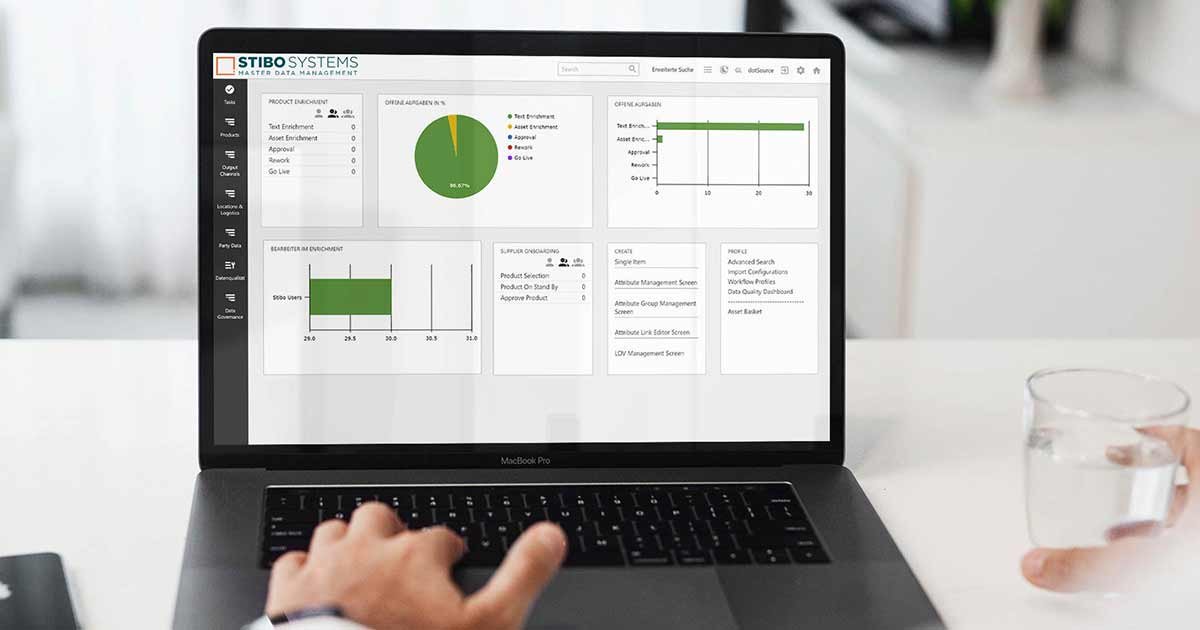 #10
#10
Stibo Systems STEP
By Stibo Systems
Mature and powerful multi-domain Master Data Management (MDM) platform with strong PIM capabilities, used by large global enterprises.
Platforms & Use Cases
Platforms: Cloud, On-premise, Hybrid
Best For: Global Enterprise MDM, Product Data Management at Scale, Complex Data Governance, Retail & Manufacturing Operations
Key Features
- ✓Multi-Domain MDM: Manages Product, Customer, Supplier, Location, Asset, and other data domains.
- ✓Data Modeling: Highly flexible and scalable data modeling capabilities.
- ✓Data Governance & Workflow: Sophisticated tools for data quality, stewardship, and process automation.
- ✓Hierarchy Management: Advanced capabilities for managing complex product and organizational hierarchies.
- ✓Global Implementations: Proven track record in large, multi-national deployments.
Scorecard (Overall: 8.1 / 10.0)
Pricing
Enterprise Platform
Contact Vendor
- Multi-domain MDM
- PIM capabilities
- DAM
- Workflow
- Data Quality
- Hierarchy Management
Limitations: Significant investment, Requires expertise to implement and manage
Pros
- + Market leader in multi-domain MDM
- + Extremely scalable and powerful
- + Excellent data modeling and governance
- + Strong vendor reputation and experience
Cons
- - Very complex platform
- - Requires significant investment and resources
- - User interface less modern than some competitors
- - Lengthy implementation cycles
Verdict
"A top-tier MDM platform with robust PIM features, best suited for large, global organizations with complex master data challenges across multiple domains."
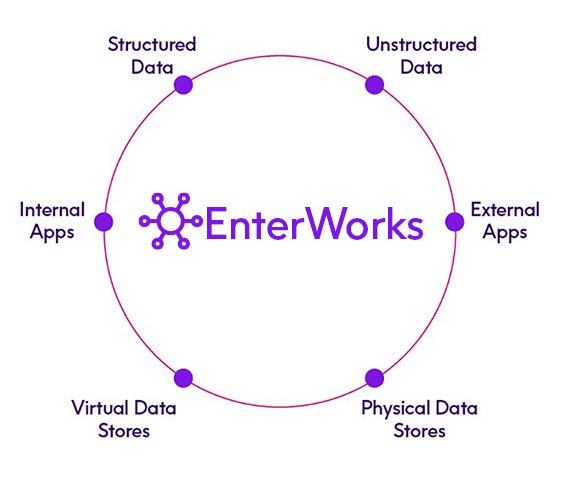 #9
#9
EnterWorks PIM & MDM (Precisely)
By Precisely (formerly Winshuttle/EnterWorks)
Enterprise-grade PIM and multi-domain MDM platform designed for complex data governance, B2B/B2C commerce, and data syndication.
Platforms & Use Cases
Platforms: Cloud, On-premise, Hybrid
Best For: Complex B2B E-commerce, Multi-domain Master Data Management, Data Governance & Compliance, Manufacturing & Distribution
Key Features
- ✓Multi-domain MDM: Manages Product, Customer, Supplier, Location, and other domains.
- ✓Configurable Workflow Engine: Supports complex business processes and governance.
- ✓Data Quality Framework: Tools for monitoring, validating, and cleansing data.
- ✓Vendor Portal: Facilitates supplier data onboarding and collaboration.
- ✓Scalability: Designed for large enterprises with high data volumes.
Scorecard (Overall: 7.9 / 10.0)
Pricing
Enterprise Platform
Contact Vendor
- PIM
- MDM
- DAM
- Portals
- Workflow
- Data Quality
Limitations: Complex and typically high investment required
Pros
- + Powerful multi-domain MDM capabilities
- + Highly configurable and scalable
- + Strong data governance and workflow features
- + Suitable for complex B2B scenarios
Cons
- - User interface often considered less modern/intuitive
- - Complex implementation
- - Can be very expensive
Verdict
"A robust MDM/PIM solution for large enterprises with complex data governance requirements and multi-domain data challenges."
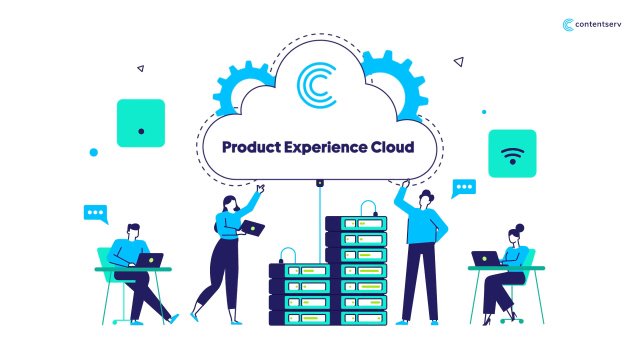 #8
#8
Contentserv Product Experience Platform
By Contentserv
Comprehensive platform combining PIM, DAM, and MDM capabilities, targeted at marketing and product teams in mid-market and enterprise companies.
Platforms & Use Cases
Platforms: Cloud, On-premise, Hybrid
Best For: Marketing Content Management, Product Experience Management, Master Data Management, Global Product Launches
Key Features
- ✓Integrated PIM & DAM (MAM): Manages product data and marketing assets within one system.
- ✓Flexible Data Modeling: Supports complex product structures and relationships.
- ✓Marketing Focus: Tools tailored for marketing content creation and management.
- ✓Business Process Management: Integrated workflow engine for process automation.
- ✓Multi-domain MDM: Capability to manage other data domains beyond product.
Scorecard (Overall: 7.6 / 10.0)
Pricing
Platform License/Subscription
Contact Vendor
- Core PIM/MDM
- MAM (DAM)
- BPM
- Optional modules
Limitations: Pricing dependent on deployment, modules, scale
Pros
- + Strong combination of PIM and DAM (MAM)
- + Flexible data modeling
- + Good workflow capabilities
- + Supports both cloud and on-premise deployment
Cons
- - User interface can be complex
- - Implementation may require significant effort
- - Syndication less extensive than some competitors
Verdict
"A robust platform for enterprises needing strong PIM/DAM integration and flexible data modeling, particularly suited for marketing-heavy operations."
 #7
#7
Sales Layer PIM
By Sales Layer
SaaS PIM platform focused on helping brands and retailers centralize product information and connect it to multiple sales channels quickly.
Platforms & Use Cases
Platforms: Cloud, SaaS
Best For: Multi-channel E-commerce, Catalog Automation, Improving Time-to-Market, Supplier Collaboration
Key Features
- ✓Intuitive User Interface: Emphasis on ease of use and fast onboarding.
- ✓Instant Catalogs: Feature for quickly creating shareable digital catalogs.
- ✓Connector Marketplace: Pre-built connectors for various e-commerce platforms and marketplaces.
- ✓Data Quality Analytics: Tools to monitor and improve product information completeness.
- ✓Workflow Automation: Automates enrichment and approval processes.
Scorecard (Overall: 7.4 / 10.0)
Pricing
Standard/Pro/Enterprise
Contact Vendor
- Varying levels of features
- Connectors
- User seats
- SKU counts
- Support
Limitations: Specific features tiered, Pricing requires contact
Pros
- + Very user-friendly
- + Fast implementation time
- + Good range of connectors
- + Strong focus on channel connectivity
Cons
- - Data modeling less powerful than some competitors
- - DAM features are basic
- - May lack depth for highly complex enterprise scenarios
Verdict
"A strong contender, especially for mid-market companies prioritizing ease of use, speed to market, and straightforward channel integration."
 #6
#6
Plytix PIM
By Plytix
Cloud-based PIM designed specifically for small and medium-sized businesses (SMBs), emphasizing ease of use and affordability.
Platforms & Use Cases
Platforms: Cloud, SaaS
Best For: SMB E-commerce Management, Centralized Product Data for Small Teams, Simple Catalog Creation, Channel Feed Management
Key Features
- ✓User-Friendly Interface: Designed for ease of use, minimal training required.
- ✓Unlimited Users: Standard plans typically include unlimited user seats.
- ✓Integrated DAM: Basic digital asset management capabilities included.
- ✓Channel Management: Tools for creating and managing product feeds for various channels.
- ✓Computed Attributes: Allows deriving attribute values based on formulas.
Scorecard (Overall: 6.6 / 10.0)
Pricing
Free
Contact Vendor
- Core PIM
- 1,000 SKUs
- Limited Assets
- Basic Features
Limitations: SKU limit, Feature restrictions
Standard
$300.00 / Monthly (Approx, often billed annually)
- Increased SKU limits
- More assets
- Channels
- Basic Analytics
Limitations: Certain advanced features require Pro
Pro
$830.00 / Monthly (Approx, often billed annually)
- Higher limits
- Advanced features
- Brand Portals
- Product Variations
Limitations: Top tier features
Pros
- + Very easy to use
- + Affordable pricing model
- + Good fit for SMBs
- + Unlimited users often included
Cons
- - Less feature-rich than enterprise solutions
- - Limited data modeling flexibility
- - Basic DAM and workflow capabilities
- - Scalability might be a concern for very large catalogs
Verdict
"An excellent and accessible PIM for small to medium-sized businesses prioritizing ease of use and affordability over complex enterprise features."
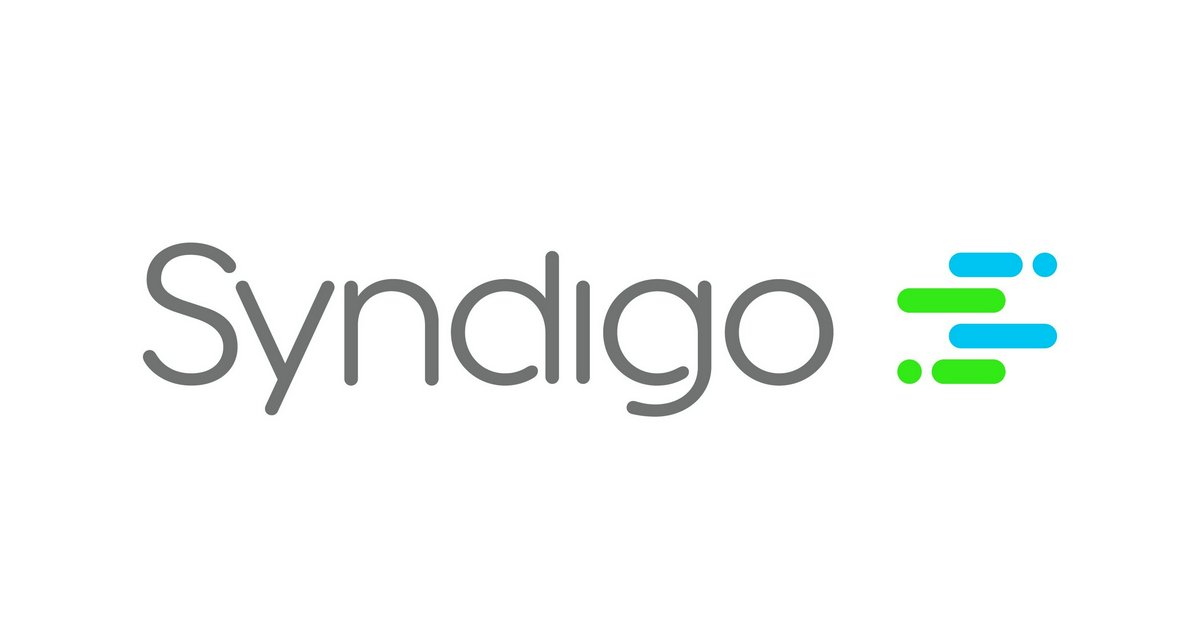 #5
#5
Syndigo Content Experience Hub (CXH)
By Syndigo
Comprehensive SaaS platform combining PIM, DAM, syndication, and analytics, with a strong focus on retail connectivity.
Platforms & Use Cases
Platforms: Cloud, SaaS
Best For: Retail Syndication, GDSN Data Pool Participation, Enhanced Content Creation, E-commerce Analytics
Key Features
- ✓Extensive Retailer Network: Vast network for syndicating content directly to retailers.
- ✓Integrated PIM/MDM/DAM: Manages core product data, master data, and assets.
- ✓Enhanced Content Capabilities: Supports rich media, 360-degree images, below-the-fold content.
- ✓Analytics and Insights: Provides data on content performance and completeness.
- ✓Global Data Synchronization Network (GDSN): Major GDSN data pool provider.
Scorecard (Overall: 8.1 / 10.0)
Pricing
Platform Subscription
Contact Vendor
- MDM Core
- PIM
- DAM
- Syndication
- Analytics
Limitations: Complex platform, Pricing varies significantly based on modules and scale
Pros
- + Unmatched retailer syndication network
- + Strong GDSN capabilities
- + Comprehensive feature set including analytics
- + Handles complex enterprise needs
Cons
- - Can be complex and costly
- - User interface may feel dated to some
- - Primarily focused on CPG and retail verticals
Verdict
"The go-to platform for large enterprises, particularly in CPG, needing extensive retailer connectivity and GDSN compliance."
 #4
#4
inriver PIM
By inriver
Multi-tenant SaaS PIM solution designed to help brands and retailers manage and syndicate product information for omnichannel commerce.
Platforms & Use Cases
Platforms: Cloud, SaaS
Best For: Omnichannel Marketing, E-commerce Merchandising, Print Catalog Automation, Supplier Content Onboarding
Key Features
- ✓Elastic Data Model: Adapts to various product structures and relationships.
- ✓Marketing Content Focus: Tools for creating engaging product stories and experiences.
- ✓Syndication & Deployment: Manages content delivery to various channels, including print.
- ✓Supplier Onboarding Portal: Streamlines collecting product data from suppliers.
- ✓Planner App: Visual tool for planning marketing campaigns and product launches.
Scorecard (Overall: 7.9 / 10.0)
Pricing
SaaS Platform
Contact Vendor
- Core PIM
- Syndicate
- Contribute (Supplier Portal)
- Planner
- Evaluate (Analytics)
Limitations: Pricing based on complexity, usage, and add-ons
Pros
- + Strong focus on marketing and merchandising use cases
- + Good user experience
- + Scalable SaaS platform
- + Effective supplier onboarding tools
Cons
- - DAM capabilities are basic
- - Some users report complexity in initial setup
- - Can become expensive with added modules/users
Verdict
"A robust SaaS PIM ideal for marketing-led organizations aiming to create rich product stories and manage omnichannel campaigns effectively."
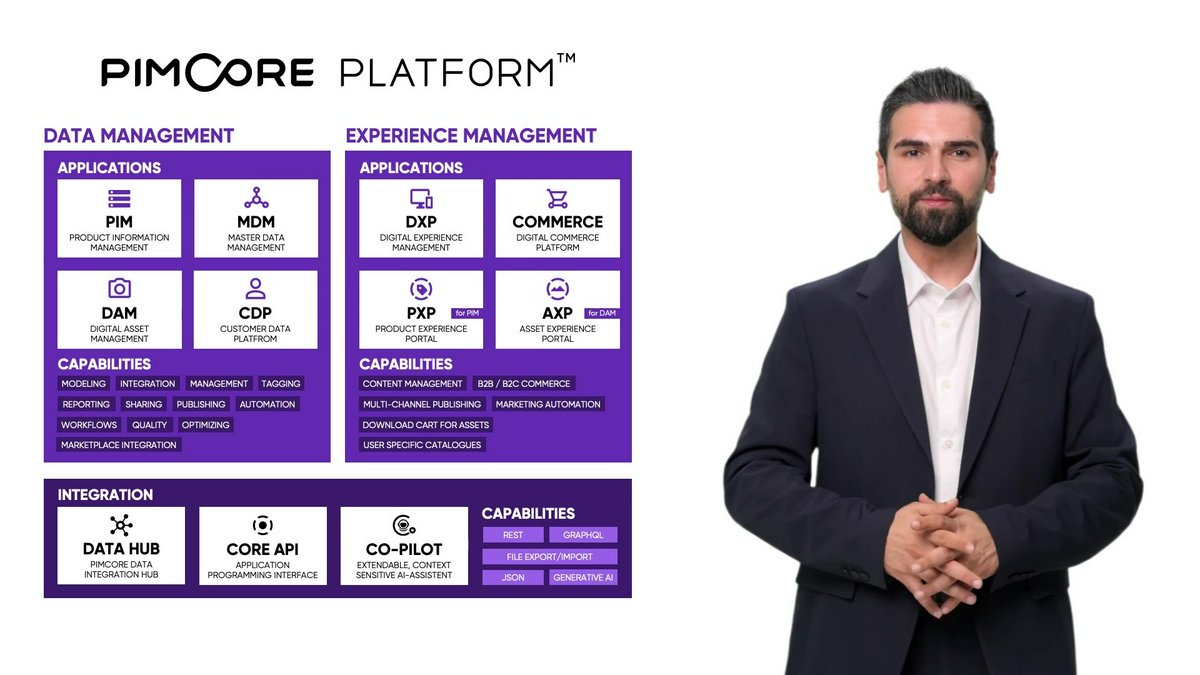 #3
#3
Pimcore Platform
By Pimcore
Open-source platform combining PIM, MDM, DAM, CDP, DXP, and E-commerce functionalities.
Platforms & Use Cases
Platforms: Cloud, On-premise, PaaS
Best For: Complex Product Data Management, Master Data Management (MDM), Digital Experience Management, Integrated Commerce
Key Features
- ✓Consolidated Platform: Offers PIM, DAM, MDM, CDP, and CMS/E-commerce in one.
- ✓Data Modeling Engine: Highly flexible modeling for any type of digital data.
- ✓Workflow Management: Sophisticated workflow engine for process automation.
- ✓Connectivity: Robust API and integration options.
- ✓Open Source: Provides flexibility and avoids vendor lock-in.
Scorecard (Overall: 8.5 / 10.0)
Pricing
Community Edition
Contact Vendor
- All core modules (PIM, DAM, MDM, CDP, DXP)
- Open Source
Limitations: Self-hosted, Community support
Enterprise Subscription
Contact Vendor
- Enterprise extensions
- Product Experience Portal
- Syndication Services
- SLAs
- LTS
- Consulting
Limitations: Requires technical expertise for implementation
Pros
- + Extremely flexible data modeling
- + Comprehensive platform (PIM, DAM, MDM, etc.)
- + Powerful workflow engine
- + Open-source option available
Cons
- - Can be complex to implement and manage
- - User interface less intuitive than some competitors
- - Requires significant development resources
Verdict
"A powerhouse for organizations needing a highly flexible, integrated data management and experience platform, especially those with complex data structures."
 #2
#2
Salsify Product Experience Management Platform
By Salsify
Cloud-native platform combining PIM, DAM, and syndication capabilities to manage product experiences across the digital shelf.
Platforms & Use Cases
Platforms: Cloud, SaaS
Best For: Digital Shelf Optimization, Retailer Syndication, E-commerce Acceleration, Brand Management
Key Features
- ✓Integrated PIM & DAM: Manages product information and related digital assets together.
- ✓Channel Syndication: Extensive network and tools for distributing data to retailers and marketplaces.
- ✓Workflow Automation: Automates tasks for content enrichment and distribution.
- ✓Readiness Reports: Analyzes product data completeness for specific channels.
- ✓Supplier Collaboration Portals: Facilitates onboarding product data from suppliers.
Scorecard (Overall: 8.4 / 10.0)
Pricing
Platform Access
Contact Vendor
- Core PIM
- Integrated DAM
- Workflow
- Readiness Reports
- Syndication
Limitations: Pricing based on usage, channels, features
Pros
- + Excellent channel syndication capabilities
- + Integrated PIM and DAM
- + Strong workflow and collaboration tools
- + Cloud-native and scalable
Cons
- - Can be expensive
- - Data modeling less flexible than some competitors
- - Focus is heavily on the 'digital shelf' use case
Verdict
"An excellent choice for brands focused on optimizing their presence on e-commerce channels and retailers, offering powerful syndication."
View Top Ranked Software
Watch a short ad to unlock the details for the #1 ranked software.
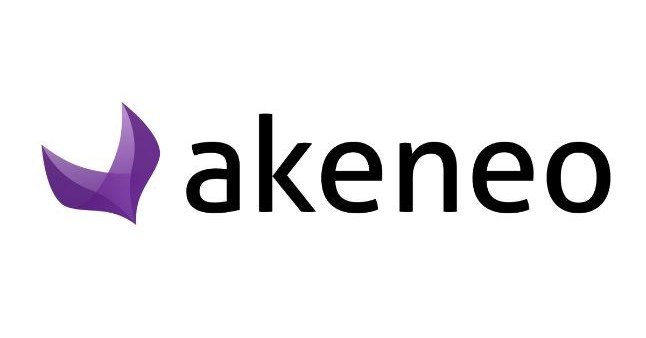 #1
#1
Akeneo PIM
By Akeneo
Open-source and enterprise PIM solution focused on creating compelling product experiences across all channels.
Platforms & Use Cases
Platforms: Cloud, On-premise (Community Edition), PaaS
Best For: E-commerce Product Enrichment, Omnichannel Commerce, Catalog Management, Supplier Data Onboarding
Key Features
- ✓Data Modeling: Flexible product modeling with attributes, families, variants.
- ✓Data Quality Automation: Rules and metrics to ensure completeness and consistency.
- ✓App Store: Marketplace for extensions and connectors.
- ✓Product Asset Management: Manages digital assets linked to products.
- ✓Syndication: Distributes product data to various channels.
Scorecard (Overall: 8.1 / 10.0)
Pricing
Community Edition
Contact Vendor
- Core PIM features
- Open Source
Limitations: Self-hosted, Limited features, Community support
Growth Edition
Contact Vendor
- SaaS
- Enhanced features
- Basic DAM
- Standard Support
Limitations: Limits on users/products/channels
Enterprise Edition
Contact Vendor
- Advanced features
- Advanced Rights Management
- Advanced Workflows
- Asset Manager
- API Access
Limitations: Higher cost
Pros
- + Strong open-source option
- + User-friendly interface
- + Active community and marketplace
- + Good scalability
Cons
- - Enterprise features can be costly
- - DAM capabilities less advanced than dedicated DAMs
- - Steeper learning curve for complex setups
Verdict
"A leading PIM solution, particularly strong for businesses seeking flexibility with its open-source roots and scalable enterprise offerings."

Final Thoughts
The PIM software market offers diverse solutions catering to different needs, from SMB-focused tools emphasizing ease of use to complex enterprise platforms providing multi-domain MDM capabilities. Key differentiators include data modeling flexibility, syndication reach, integrated DAM, user experience, and pricing models. Selection depends heavily on business size, technical expertise, specific use cases (like retailer syndication or complex B2B), and budget.